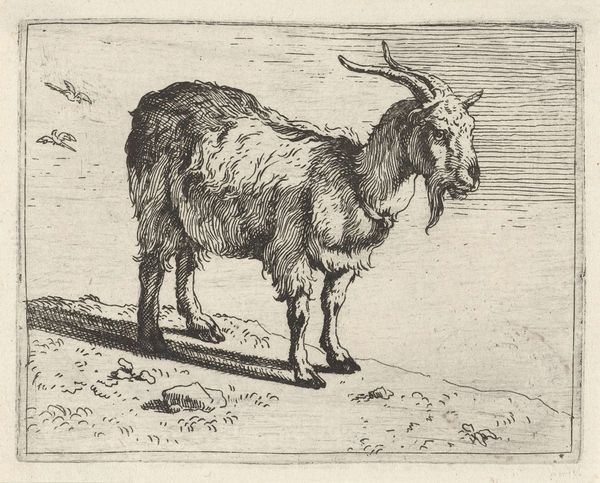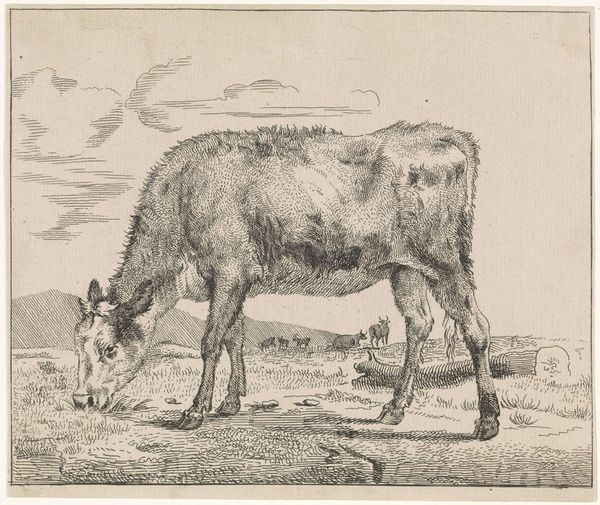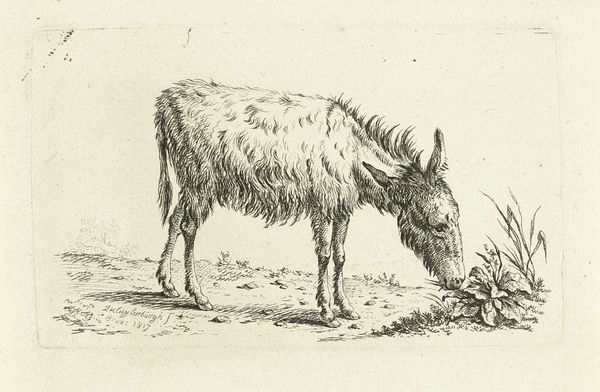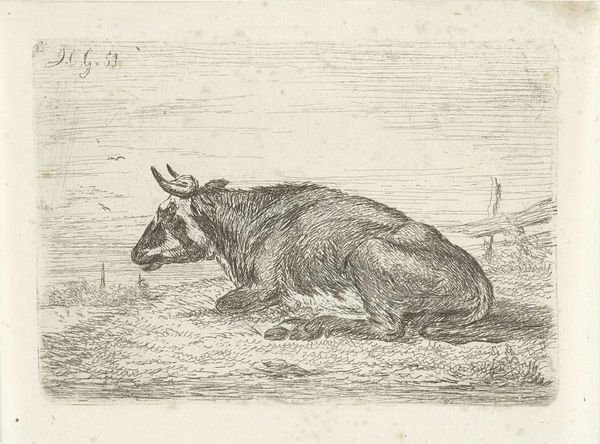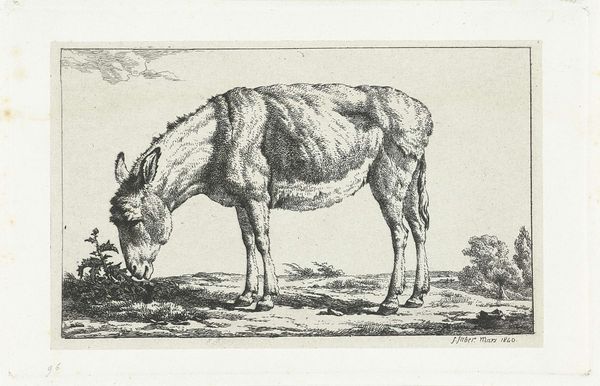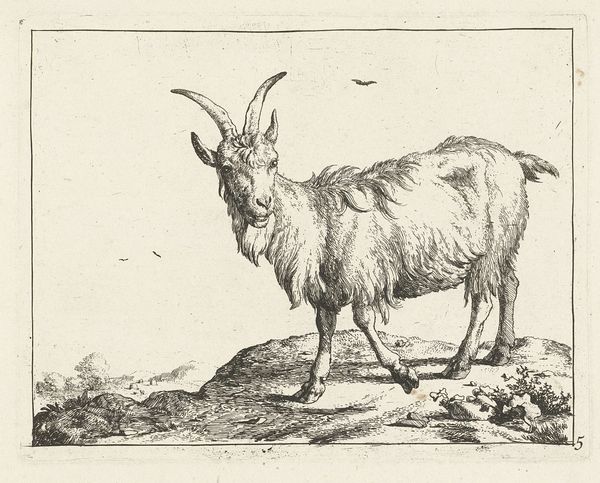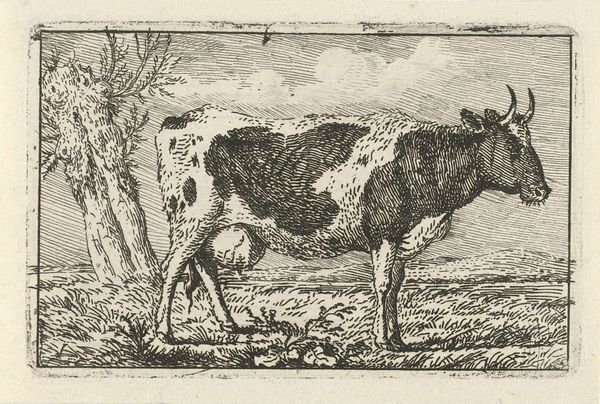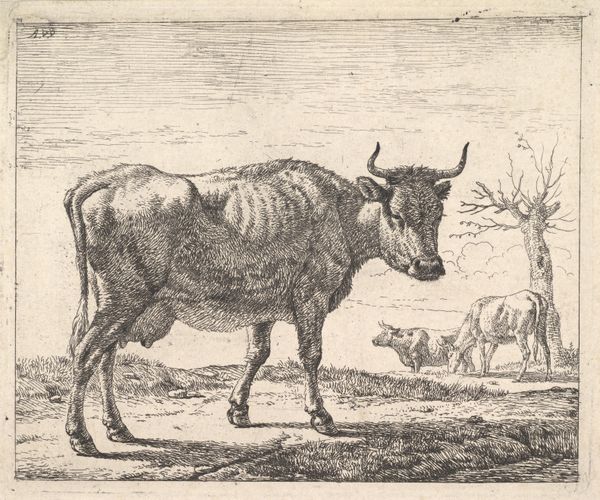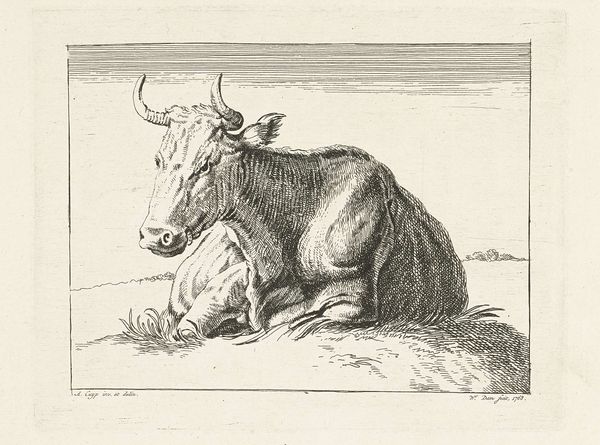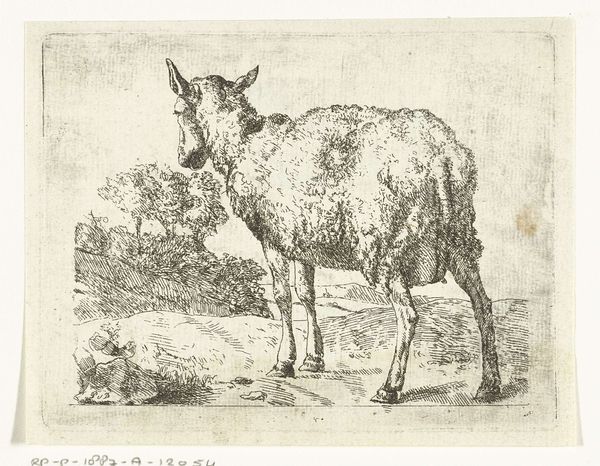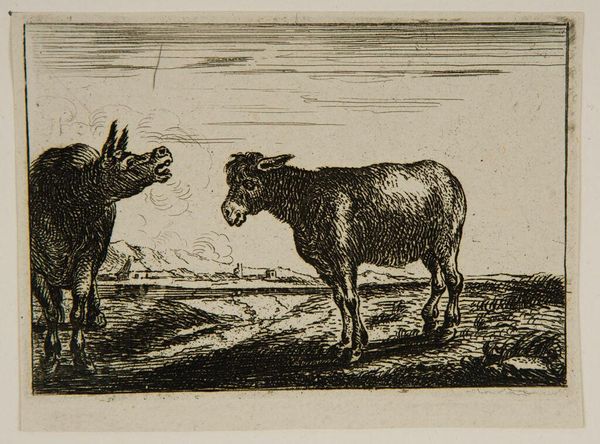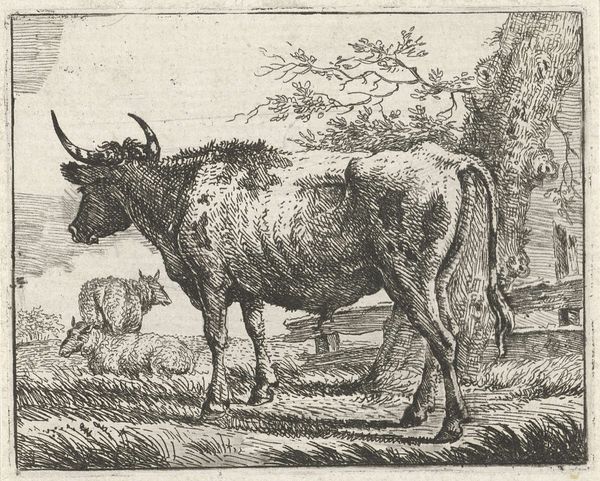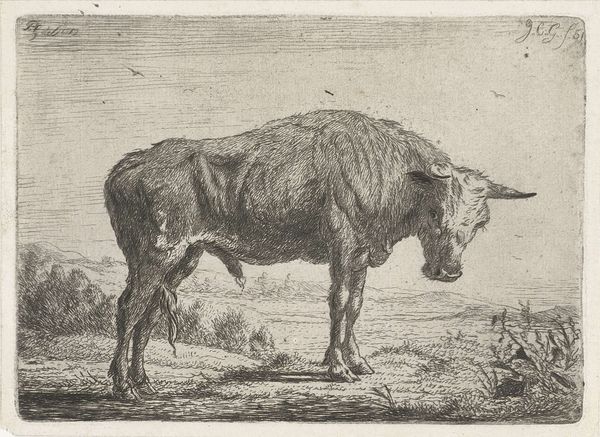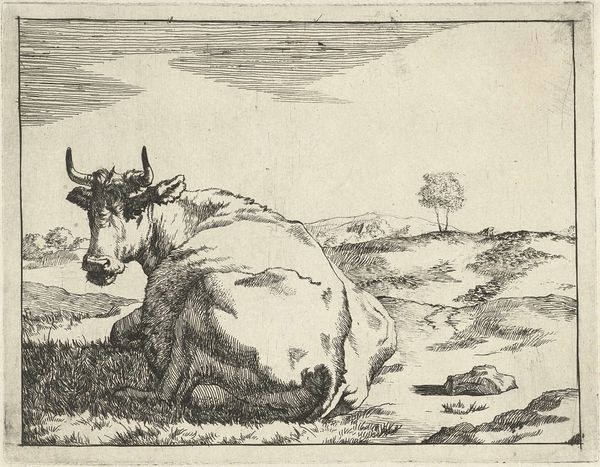
print, etching
#
animal
#
dutch-golden-age
# print
#
pen sketch
#
etching
#
old engraving style
#
landscape
#
figuration
#
line
#
realism
Dimensions: height 109 mm, width 154 mm
Copyright: Rijks Museum: Open Domain
Govert van der Leeuw created this etching, titled ‘Ezel’, in the Dutch Republic during the Golden Age. This was a period of unprecedented economic growth and cultural flourishing. ‘Ezel’, meaning donkey in Dutch, depicts the animal standing in a field. The donkey was a common farm animal, essential for transportation and agriculture. Representations of donkeys in Dutch art weren’t just about pastoral scenes though. They were often used allegorically. The donkey could be a symbol of ignorance, stubbornness, or humility, depending on the context. In the 17th-century Dutch Republic, where religious and political ideas were frequently debated, the donkey might also represent the common person. In this artwork the donkey has a calm dignity. What do you make of how Van der Leeuw has portrayed it? Does it challenge the traditional negative associations of the animal, or does it reinforce them? Consider how our own societal values influence the meaning of ‘Ezel’.
Comments
No comments
Be the first to comment and join the conversation on the ultimate creative platform.
